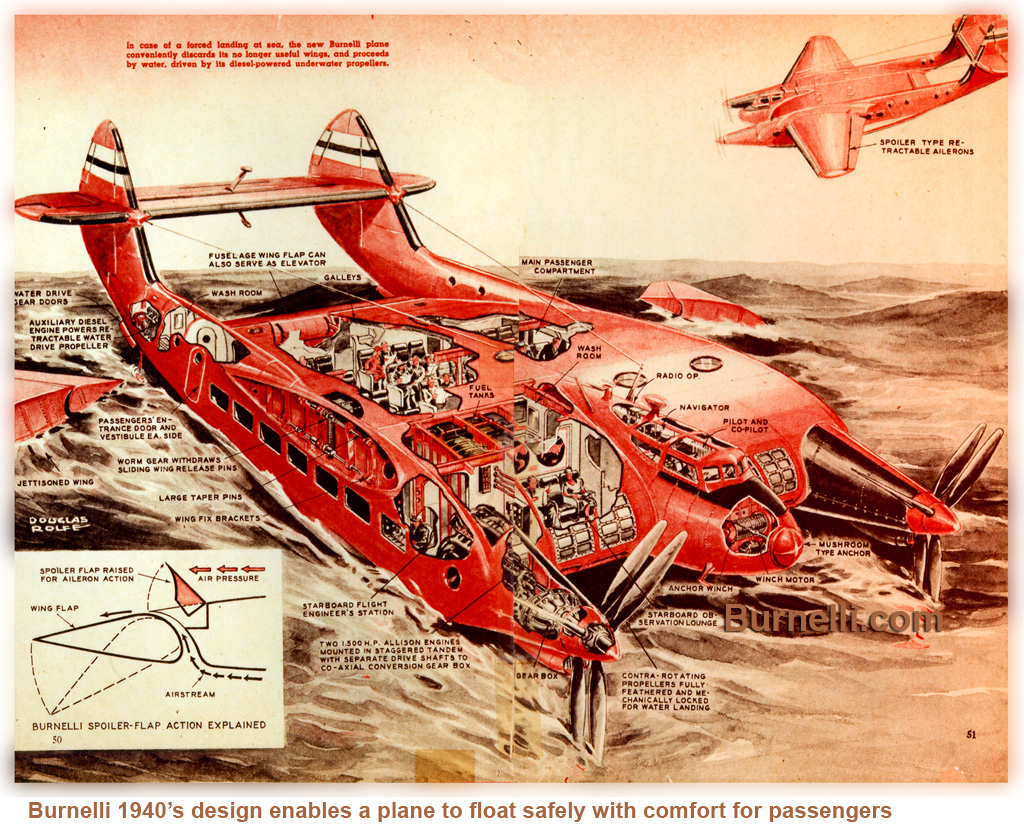Imagine a fleet of huge ground effect cargo planes flying (or skimming along) between Halifax and Liverpool. Skimming along at 120 Knots carrying a 100 ton cargo making the passage in a little over a day.
Immune to U-boats and largely protected from the Luftwaffe by the RAF these craft would be used for high priority cargo and personnel.
But could such vehicles have been built in the early 1940s considering the aeronautical knowledge at the time about ground effect? To carry 100 tons how big would it need to be?
How much horsepower would be needed to fly a plane that size in ground effect? How many and what kind of engines? How much fuel? I should have studied aviation engineering in college.
I don't have a sufficient understanding of the engineering involved to say whether this idea is complete ASB or if there is some merit to it. I'm guessing these vehicles would be far more efficient than the Spruce Goose as they would be taking advantage of ground effect flight.
On the other hand there is the North Atlantic sea state and weather to contend with. Big waves and icing and high winds. If you have to skim higher to avoid waves you start losing the benefit of ground effect. However like an airplane if the weather goes bad you can turn around and/or divert somewhere and wait out the storm.
I think they would be 100% safe from U-boats. If the flight crew spots one along the flight path they can fly/skim well around it as well as reporting the sighting. Perhaps my planes should have a dorsal turret or two equipped with a couple of 50 caliber Brownings in case a Condor gets past the RAF patrols?
If this could possibly have been a feasible project then these craft could have been mass produced like Liberty ships. Flocks of a hundred at a time skimming across the Atlantic to the U.K. What a sight that would have been.
Immune to U-boats and largely protected from the Luftwaffe by the RAF these craft would be used for high priority cargo and personnel.
But could such vehicles have been built in the early 1940s considering the aeronautical knowledge at the time about ground effect? To carry 100 tons how big would it need to be?
How much horsepower would be needed to fly a plane that size in ground effect? How many and what kind of engines? How much fuel? I should have studied aviation engineering in college.
I don't have a sufficient understanding of the engineering involved to say whether this idea is complete ASB or if there is some merit to it. I'm guessing these vehicles would be far more efficient than the Spruce Goose as they would be taking advantage of ground effect flight.
On the other hand there is the North Atlantic sea state and weather to contend with. Big waves and icing and high winds. If you have to skim higher to avoid waves you start losing the benefit of ground effect. However like an airplane if the weather goes bad you can turn around and/or divert somewhere and wait out the storm.
I think they would be 100% safe from U-boats. If the flight crew spots one along the flight path they can fly/skim well around it as well as reporting the sighting. Perhaps my planes should have a dorsal turret or two equipped with a couple of 50 caliber Brownings in case a Condor gets past the RAF patrols?
If this could possibly have been a feasible project then these craft could have been mass produced like Liberty ships. Flocks of a hundred at a time skimming across the Atlantic to the U.K. What a sight that would have been.
